Jack Butler Yeats RHA (1871-1957) The Handball Alley Watercolour on board, 26.5 x 36.5cm (10� x 14�'') Signed Provenance: With the Oriel Gallery, label verso; Collection of the late Karl Mullan; Private Collection Literature: Hilary Pyle, Jack B Yeats. His Watercolours, Drawings and Pastels, no.601.� � Handball is believed to have been played in Ireland since at least the 16th century. Its purpose-built alley, the first said to date to the 1790s, is a vernacular building type unique to Ireland. It normally consists of two short side walls, and a wide end wall, as can be seen in Yeats�s painting. Handball alleys were for many years the focus of community life attracting day-long gatherings of players and onlookers. The GAA charter listed handball as one of its four officially recognized games and the first national handball championship was held in 1923 by which time alleys had been constructed all over the country. The painting is based on a scene that Yeats sketched in Swinford, Co. Mayo when he visited the town with J. M. Synge in 1905.[1] It depicts four players engaged in a game with two in the foreground preparing to return the ball to their competitors at the front of the court. The informal nature of the game is evoked by the diversity of their clothes and the casual stance of their onlookers. The latter lean on the side wall, engrossed in watching the sport unfold. A third figure steps across a shallow stream, hands in pocket, with his gaze directed towards the players. A large basket resting on the ground suggests that at least one spectator has been distracted from his errands by the sport. The painting encapsulates the centrality of sport to rural Irish life at the beginning of the 20th century in a sympathetic and humorous manner. Yeats returned to the subject in a later oil painting, The Ball Alley, (1927, Hugh Lane Gallery). The perspective of the alley is markedly flattened making it appear like an abstract shape. Warm yellow sunlight further transforms it into an uncanny intrusion into the landscape which extends around it. The shadow of the right-hand wall casts a large triangle of blue across the court, adding to the sense of the incongruous. The painting belonged to the former rugby international, Karl Mullan, an important collector of Yeats�s work. � [1] Sketchbook 2, National Gallery of Ireland, see H. Pyle, Jack B Yeats. His Watercolours, Drawings and Pastels, Irish Academic Press, 1993, p. 150. � Roisin Kennedy August 2021 � � Jack Butler Yeats RHA (1871-1957) The Handball Alley Watercolour on board, 26.5 x 36.5cm (10� x 14�'') Signed Provenance: With the Oriel Gallery, label verso; Collection of the late Karl Mullan; Private Collection Literature: Hilary Pyle, Jack B Yeats. His Watercolours, Drawings and Pastels, no.601.� � Handball is believed to have been played in Ireland since at least the 16th century. Its purpose-built alley, the first said to date to the 1790s, is a vernacular building type unique to Ireland. It normally consists of two short side walls, and a wide end wall, as can be seen in Yeats�s painting. Handball alleys were for many years the focus of community life attracting day-long gatherings of players and onlookers. The GAA charter listed handball as one of its four officially recognized games and the first national handball championship was held in 1923 by which time alleys had been constructed all over the country. The painting is based on a scene that Yeats sketched in Swinford, Co. Mayo when he visited the town with J. M. Synge in 1905.[1] It depicts four players engaged in a game with two in the foreground preparing to return the ball to their competitors at the front of the court. The informal nature of the game is evoked by the diversity of their clothes and the casual stance of their onlookers. The latter lean on the side wall, engrossed in watching the sport unfold. A third figure steps across a shallow stream, hands in pocket, with his gaze directed towards the players.
Jack Butler Yeats RHA (1871-1957) The Handball Alley Watercolour on board, 26.5 x 36.5cm (10� x 14�'') Signed Provenance: With the Oriel Gallery, label verso; Collection of the late Karl Mullan; Private Collection Literature: Hilary Pyle, Jack B Yeats. His Watercolours, Drawings and Pastels, no.601.� � Handball is believed to have been played in Ireland since at least the 16th century. Its purpose-built alley, the first said to date to the 1790s, is a vernacular building type unique to Ireland. It normally consists of two short side walls, and a wide end wall, as can be seen in Yeats�s painting. Handball alleys were for many years the focus of community life attracting day-long gatherings of players and onlookers. The GAA charter listed handball as one of its four officially recognized games and the first national handball championship was held in 1923 by which time alleys had been constructed all over the country. The painting is based on a scene that Yeats sketched in Swinford, Co. Mayo when he visited the town with J. M. Synge in 1905.[1] It depicts four players engaged in a game with two in the foreground preparing to return the ball to their competitors at the front of the court. The informal nature of the game is evoked by the diversity of their clothes and the casual stance of their onlookers. The latter lean on the side wall, engrossed in watching the sport unfold. A third figure steps across a shallow stream, hands in pocket, with his gaze directed towards the players. A large basket resting on the ground suggests that at least one spectator has been distracted from his errands by the sport. The painting encapsulates the centrality of sport to rural Irish life at the beginning of the 20th century in a sympathetic and humorous manner. Yeats returned to the subject in a later oil painting, The Ball Alley, (1927, Hugh Lane Gallery). The perspective of the alley is markedly flattened making it appear like an abstract shape. Warm yellow sunlight further transforms it into an uncanny intrusion into the landscape which extends around it. The shadow of the right-hand wall casts a large triangle of blue across the court, adding to the sense of the incongruous. The painting belonged to the former rugby international, Karl Mullan, an important collector of Yeats�s work. � [1] Sketchbook 2, National Gallery of Ireland, see H. Pyle, Jack B Yeats. His Watercolours, Drawings and Pastels, Irish Academic Press, 1993, p. 150. � Roisin Kennedy August 2021 � � Jack Butler Yeats RHA (1871-1957) The Handball Alley Watercolour on board, 26.5 x 36.5cm (10� x 14�'') Signed Provenance: With the Oriel Gallery, label verso; Collection of the late Karl Mullan; Private Collection Literature: Hilary Pyle, Jack B Yeats. His Watercolours, Drawings and Pastels, no.601.� � Handball is believed to have been played in Ireland since at least the 16th century. Its purpose-built alley, the first said to date to the 1790s, is a vernacular building type unique to Ireland. It normally consists of two short side walls, and a wide end wall, as can be seen in Yeats�s painting. Handball alleys were for many years the focus of community life attracting day-long gatherings of players and onlookers. The GAA charter listed handball as one of its four officially recognized games and the first national handball championship was held in 1923 by which time alleys had been constructed all over the country. The painting is based on a scene that Yeats sketched in Swinford, Co. Mayo when he visited the town with J. M. Synge in 1905.[1] It depicts four players engaged in a game with two in the foreground preparing to return the ball to their competitors at the front of the court. The informal nature of the game is evoked by the diversity of their clothes and the casual stance of their onlookers. The latter lean on the side wall, engrossed in watching the sport unfold. A third figure steps across a shallow stream, hands in pocket, with his gaze directed towards the players.
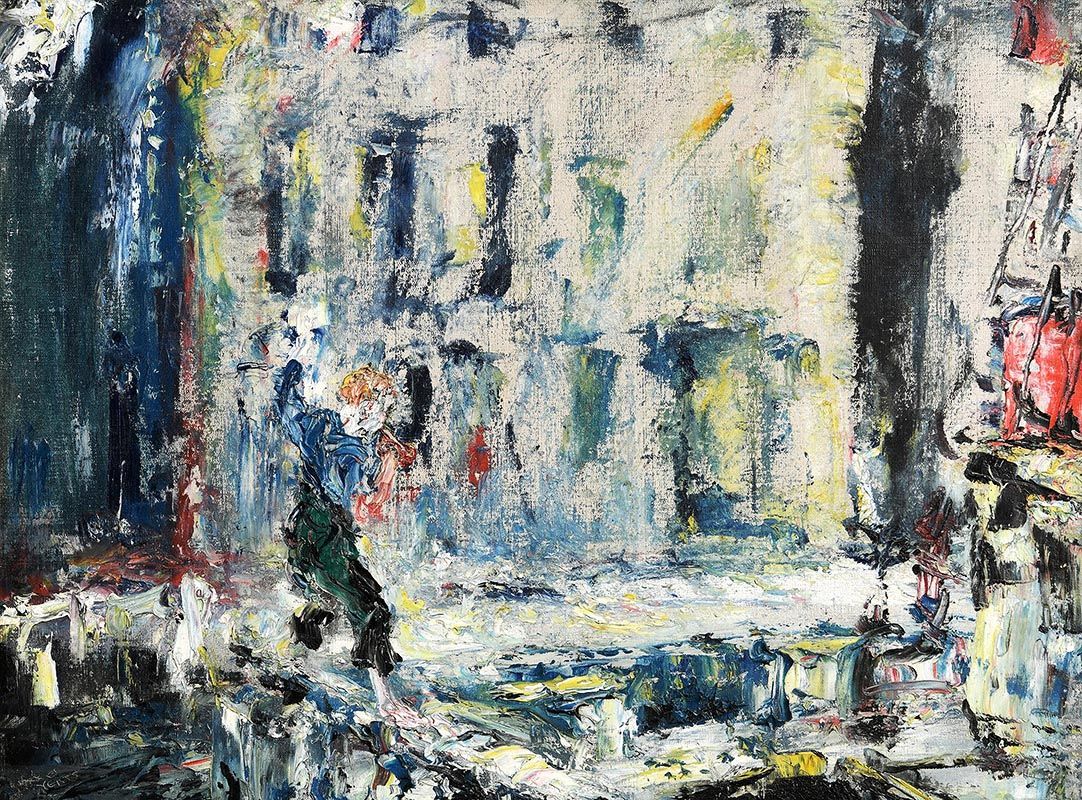
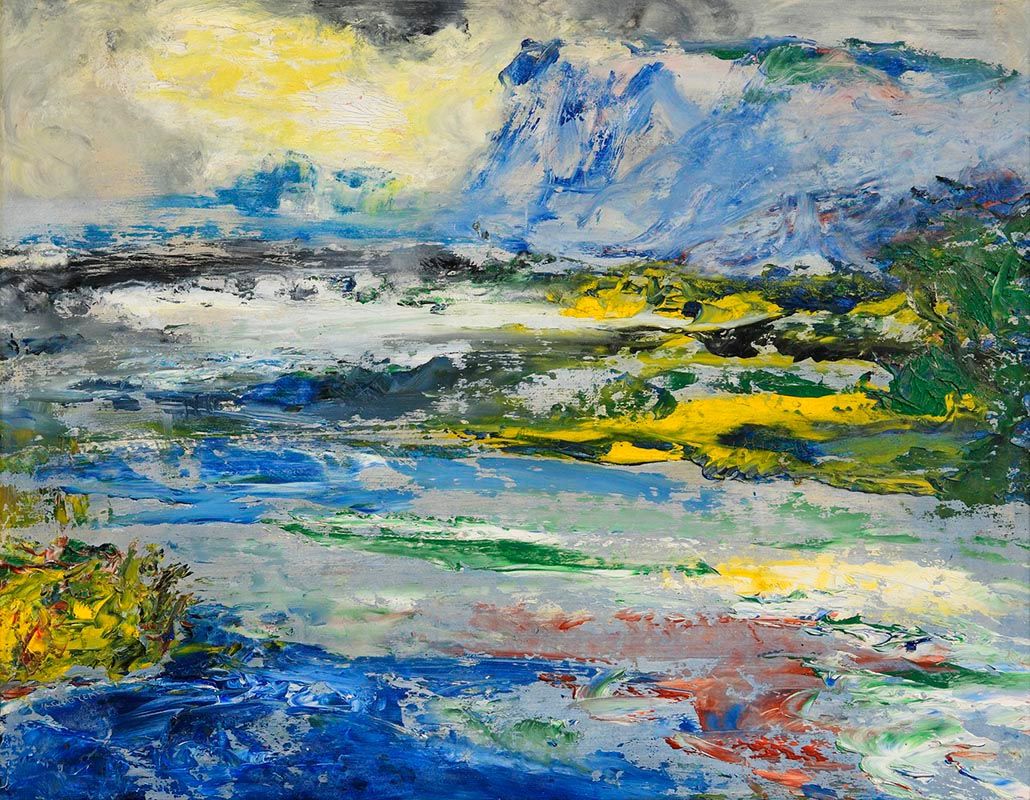
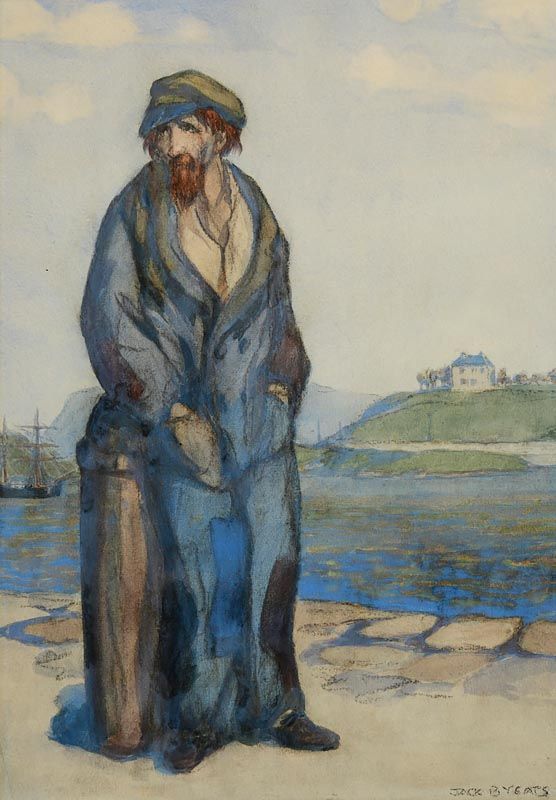

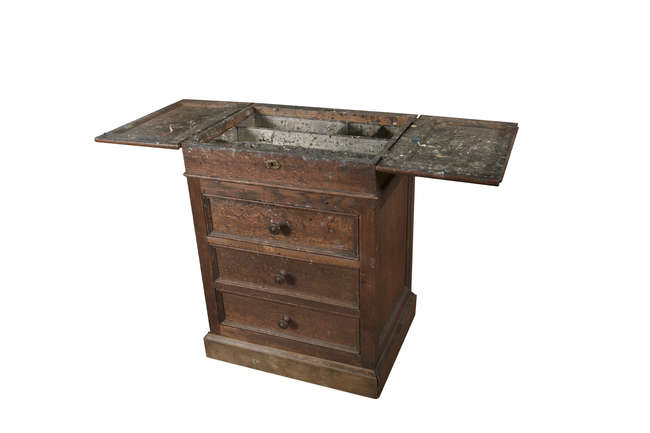
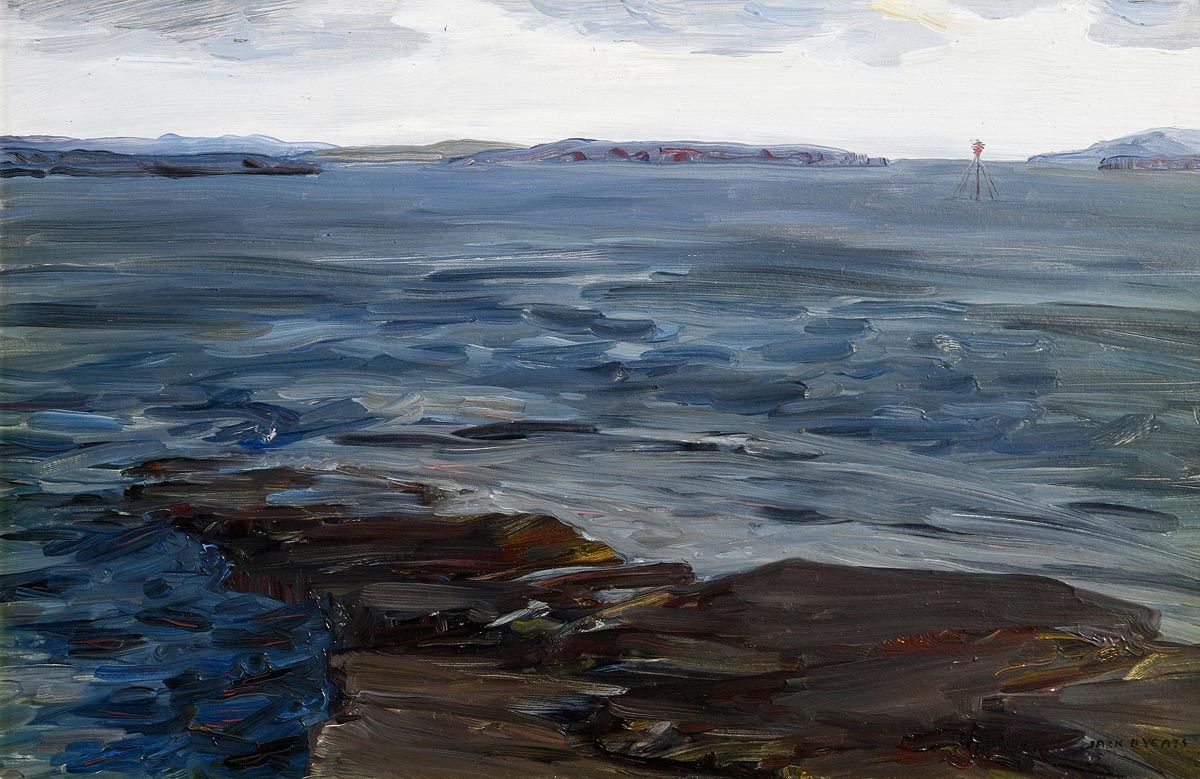
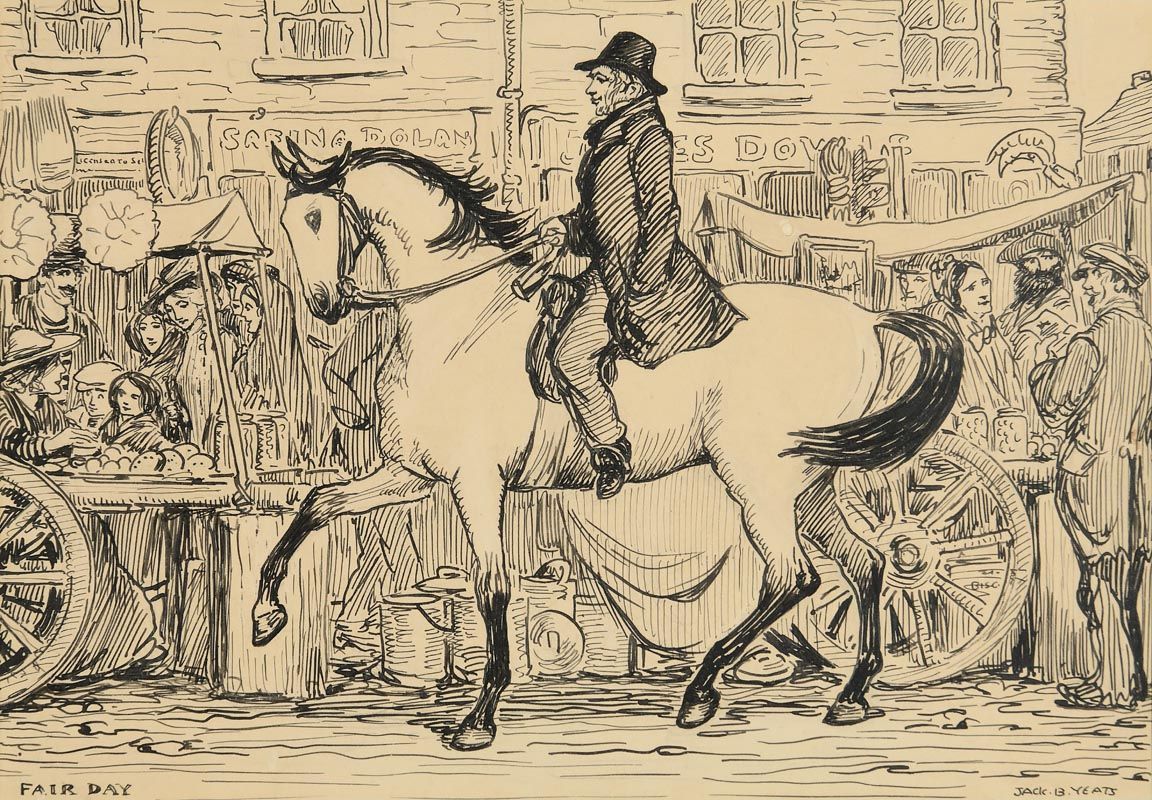
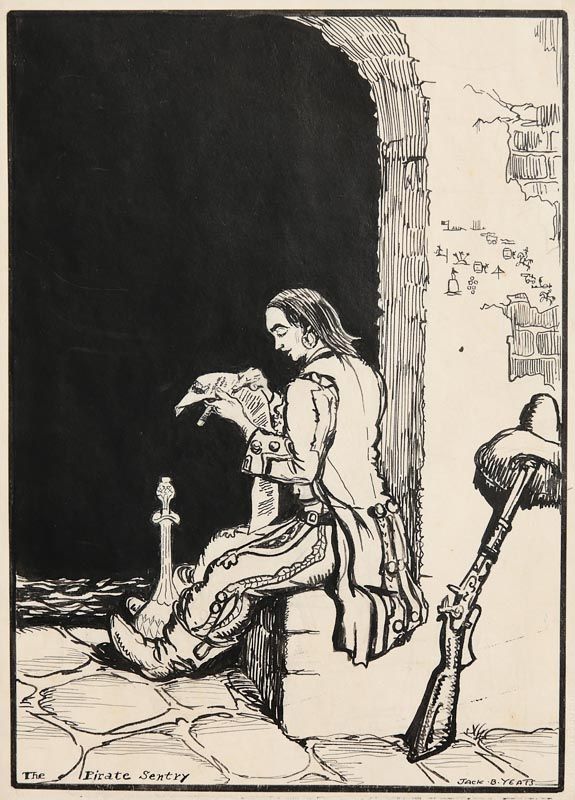


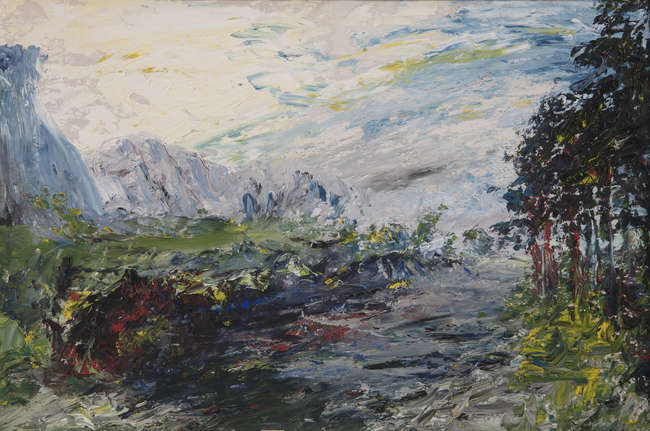
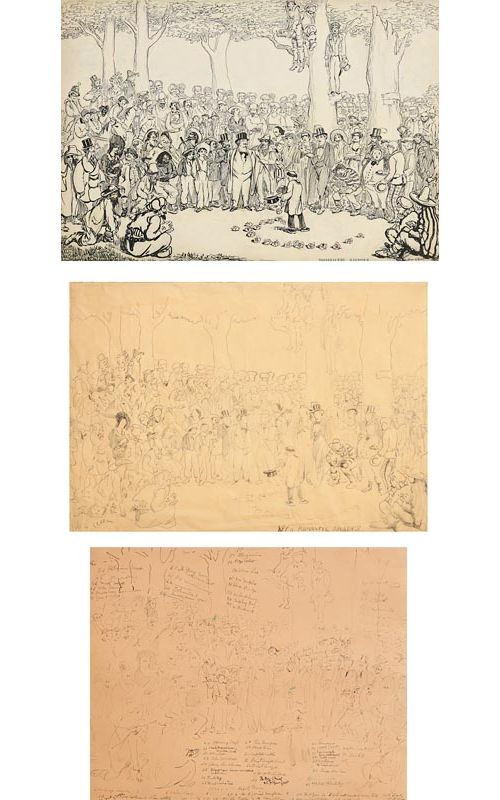
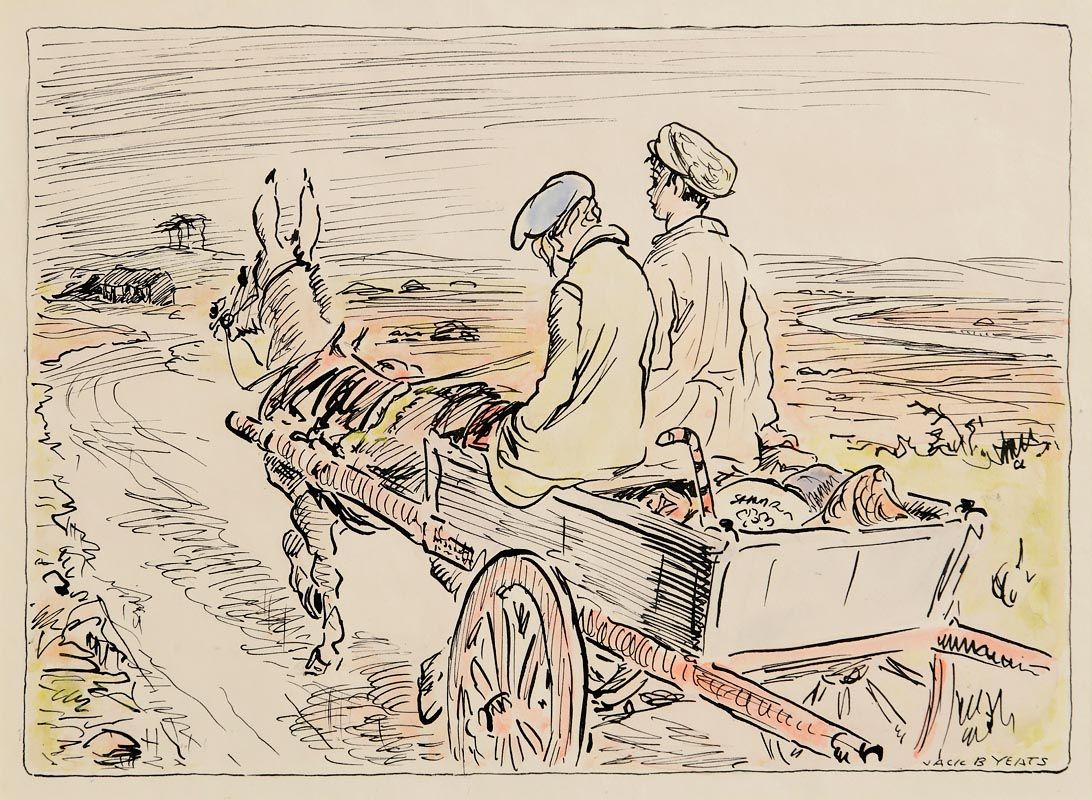

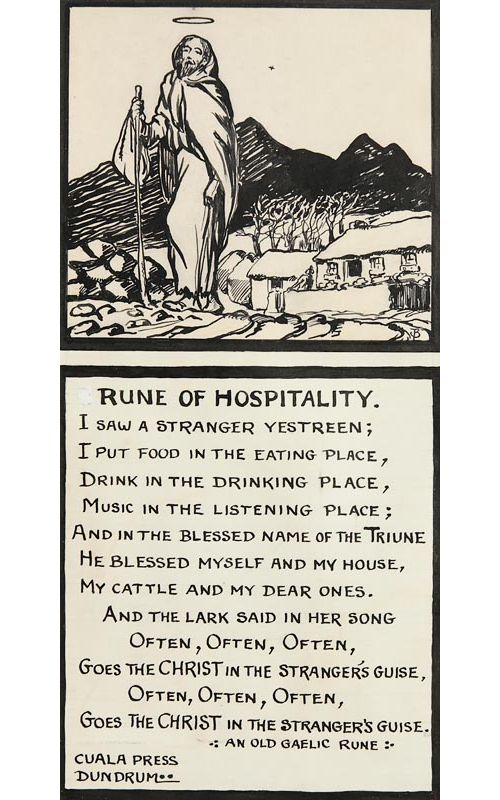
Try LotSearch and its premium features for 7 days - without any costs!
Be notified automatically about new items in upcoming auctions.
Create an alert